UK: Pamir Bee Hawkmoth
Macroglossa ducalis Staudinger 1887, Stettin. ent. Ztg 48: 66.Type locality: Namangan, Transalai [Fergana Valley, western Tian Shan, Uzbekistan].
(Taxonomic notes. (i) Subspecies dantchenkoi described by Eitschberger & Lukhtanov (1996) from central Afghanistan is untenable as it is a redescription of a high-altitude montane form from Tajikistan, namely f. efenestralis Derzhavets (1984).
(ii) The validity of Hemaris ducalis lukhtanovi Danner, Eitschberger & Surholt, 1998 as a separate subspecies/species remains open to doubt (Kitching & Cadiou, 2000). Normal, lukhtanovi-like and intermediate forms fly together in central Afghanistan (Bamiyan, Yakawlang district, Band-e-Amir, 34°48'2.80''N 67°11'3.37''E) (Rafi et al., 2014), indicating that they are probably not a distinct entity but a mix of formally isolated populations which have merged.)
[Further details on this species, as well as photos of all stages, can be found on Lepiforum.]
Holarctic; western Palaearctic region. Pleistocene refuge: Monocentric -- Turkestan refuge.
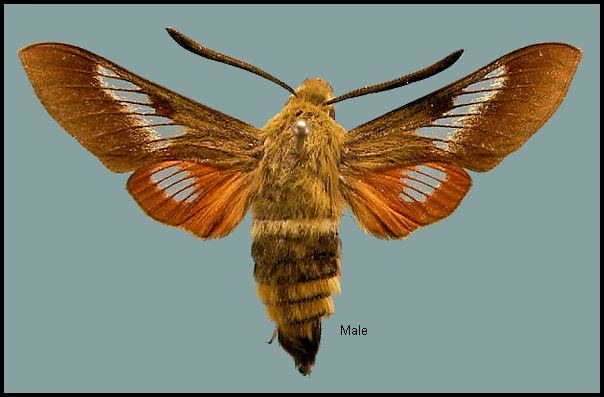
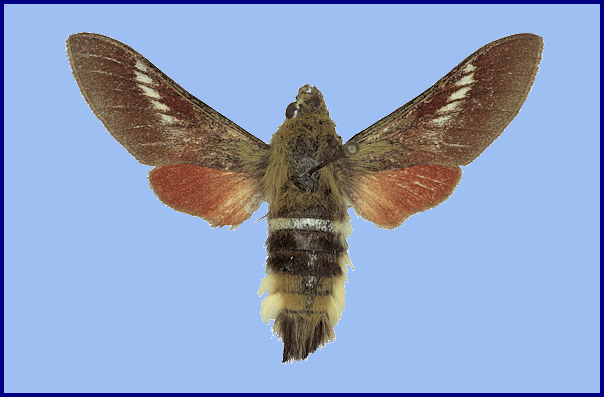
Wingspan: 40--50mm. Distinguishable from all other species of Hemaris by the off-white dorsal band on abdominal segment three. Degree of development of the transparent areas on both the forewing and hindwing variable. Arolium absent. Hindwing upperside entirely orange, apart from the transparent areas, contrasting with the more brown coloration of the forewing upperside. Differs from Hemaris dentata (Staudinger, 1887) in having the forewing almost fully scaled, the third abdominal segment yellowish white with any brown being confined to lateral tufts, and pulvillus absent.
A high-altitude montane form, originally described from Tajikistan (f. efenestralis), has the hyaline windows of the forewing partially obscured by dark scales on the side towards the outer wing margin; the windows are completely obscured on the hindwing. This is similar to the Ziarat and Gilgit specimens from Pakistan (f. lukhtanovi), where the forewing hyaline windows are barely visible, being almost totally obscured.
According to Rothschild & Jordan (1903), the male genitalia are rather distinctive; left valva more slender than in Hemaris tityus (Linnaeus, 1758), approaching that of Hemaris fuciformis (Linnaeus, 1758); process of left sacculus represented by a conspicuously spinose hump; right valva ventrally slightly emarginate beyond middle; process of right sacculus long, slender, slightly club-shaped, upper surface in apical half armed with long spines. Juxta rather densely covered with long hairs apically; phallus rather long, not very sharply pointed.
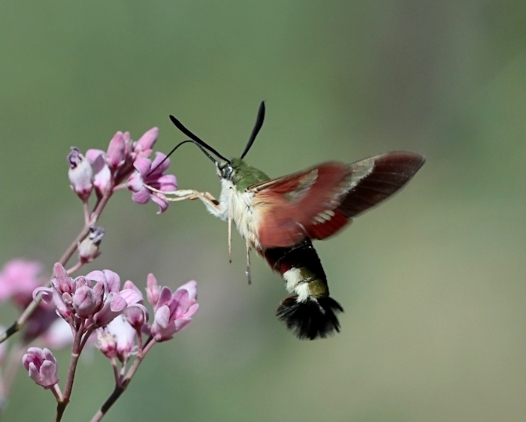
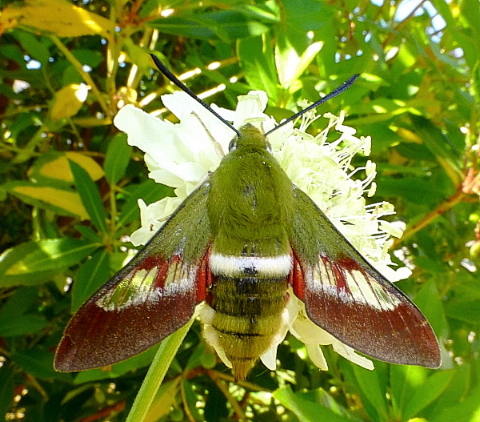
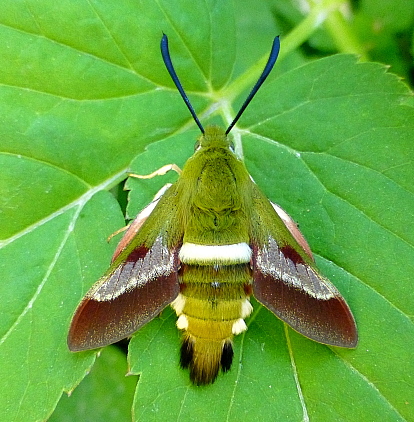
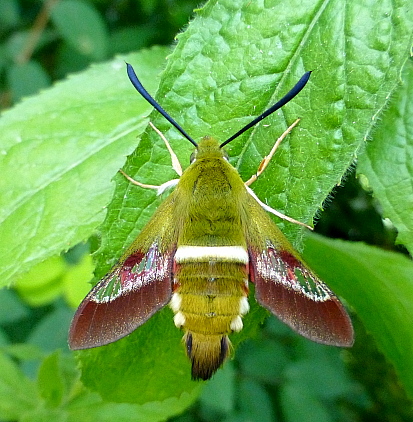
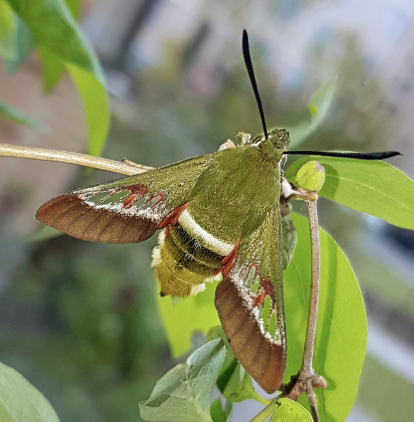
Diurnal. Found in woodland and scrub, rarely below 2000m and occurring up to 4000m. In western Mongolia at 2100m (Yakovlev & Doroshkin, 2005). In eastern Kyrgyzstan (Dzhalal-Abadskaya) at 1300m (A. Sochivko, pers. comm. 2011). In central Afghanistan (Bamiyan, Yakawlang district, Band-e-Amir, 34°48'2.80''N 67°11'3.37''E) at 2900/3000m (Rafi et al., 2014).
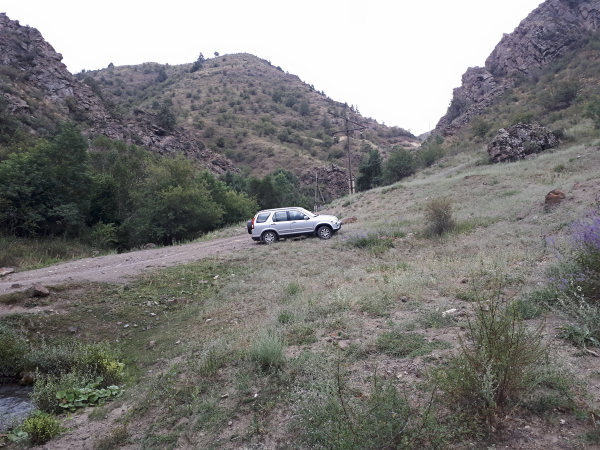
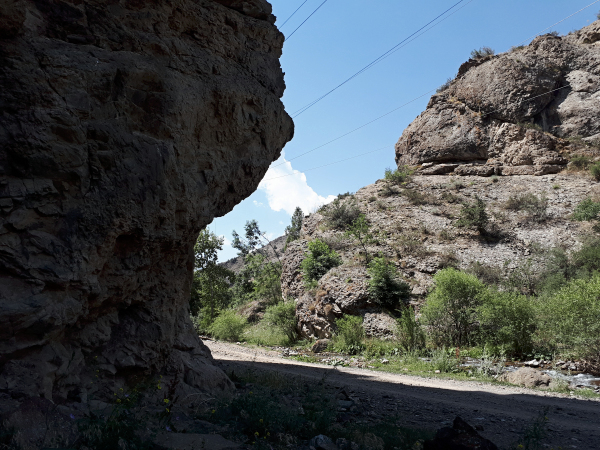
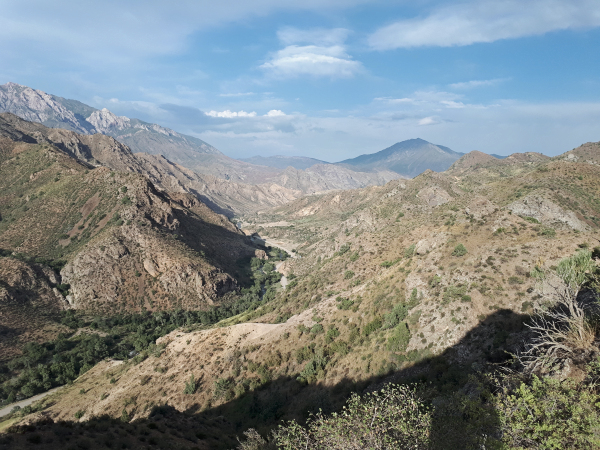
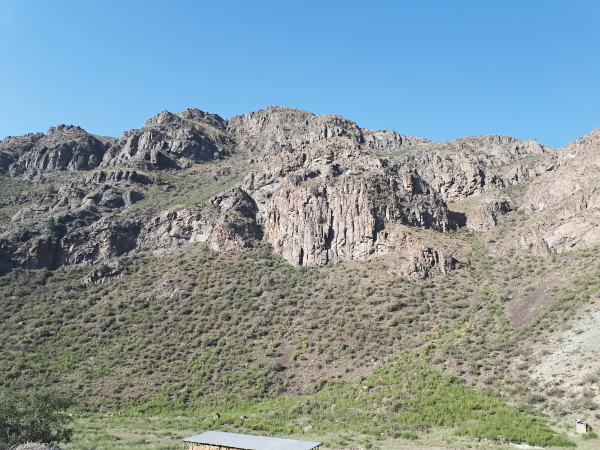
Mainly univoltine, but with a partial second generation in some areas (Serge Yevdoshenko, pers. comm. 2015). Mid June to early August is the main flight period. In southern Kazakhstan, western Mongolia and eastern Kyrgyzstan, usually during the last two weeks of June to mid July.
In the Chatkal Mountains of Kyrgyzstan this species has at least two overlapping generations. For example, during 20-29th of June (2014 & 2015) Serge Yevdoshenko (pers. comm. 2015) found both fresh adults and all preimaginal stages at the same location; however, eggs and L1 larvae predominated.
OVUM: As per Hemaris fuciformis, but a little bigger and almost spherical. Often, small, isolated plants only 40-50 cm in height are preferred oviposition sites rather than large bushes (Serge Yevdoshenko, pers. comm. 2015). As with other species of Hemaris, many eggs of this species are infected by micro-wasps (Serge Yevdoshenko, pers. comm. 2015).
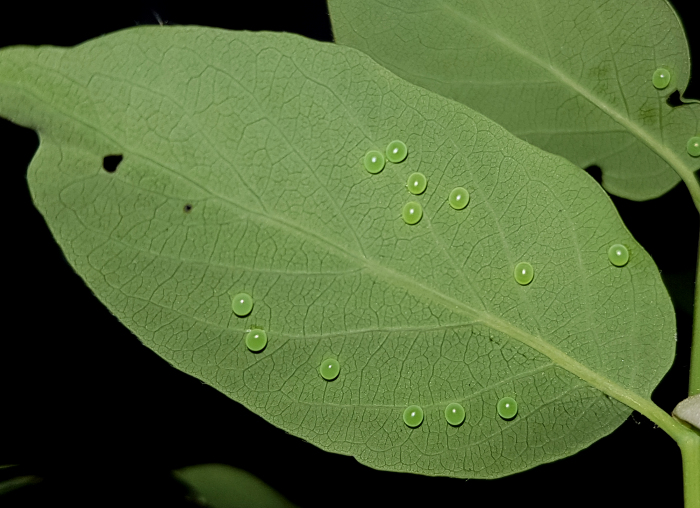
LARVA: Full-fed 33--42mm. Newly hatched larvae are yellowish and covered with noticeable hairs, and are very similar to to those of Hemaris croatica (Serge Yevdoshenko, pers. comm. 2017).
According to Degtyareva & Shchetkin (1982), the fully-grown larva resembles that of Hemaris fuciformis: dorsally and laterally pale green (in the green form), with a pair of prominent yellowish-white dorso-lateral lines running from the first thoracic segment back to a slightly curved caudal horn. The basic green body colour is tinged blue below the dorso-lateral lines, more yellow dorsally between the lines. Unlike Hemaris fuciformis, Hemaris ducalis bears a line of yellow V-shaped markings (chevrons) dorsally, one per segment, but less pronounced on the thoracic segments, all pointing caudad. Ventrally, reddish brown with a fine, light yellow ventro-lateral line separating the dark lower surface from the green sides. Where this line crosses the prolegs it thickens and becomes darker; true legs brownish-cream. Horn 5mm long, violet at base and whitish-green or cream towards the tapering tip. As in Hemaris fuciformis, the rounded head is bluish-grey and offset by a cadmium-yellow collar to the first thoracic segment. A line of the same colour also edges the anal flap. The entire head, body and horn are covered with pale tubercles, light yellow dorsally, mostly becoming cream below the dorso-lateral line. Oval spiracles reddish-brown and cream. There is also a light brown form (Serge Yevdoshenko, pers. comm. 2017).
Many L1-L3 larvae may be infected by species of Cotesia in Kyrgyzstan, but by L4 most are free of these. Final instar larvae are also usually free of parasitoids in 99.99% of cases (Serge Yevdoshenko, pers. comm. 2015; 2017).
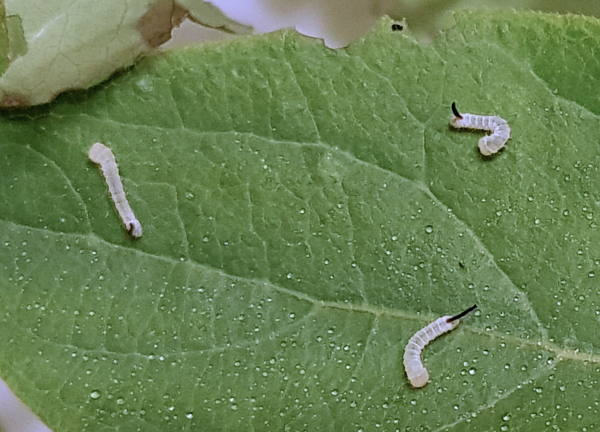
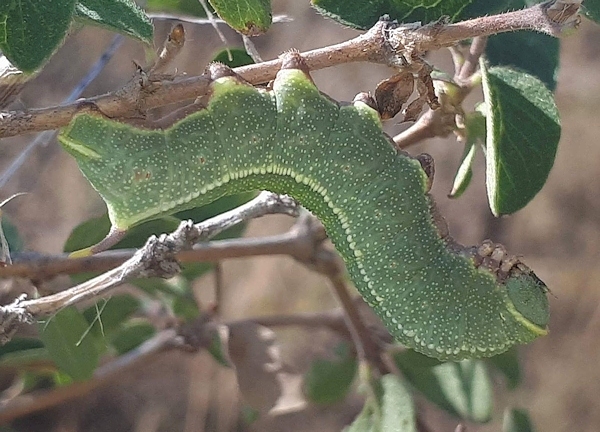
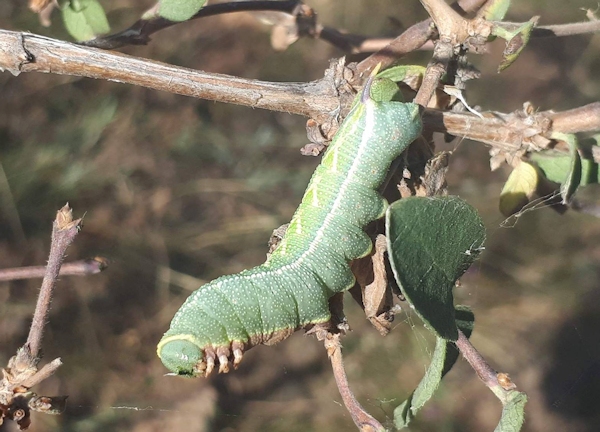
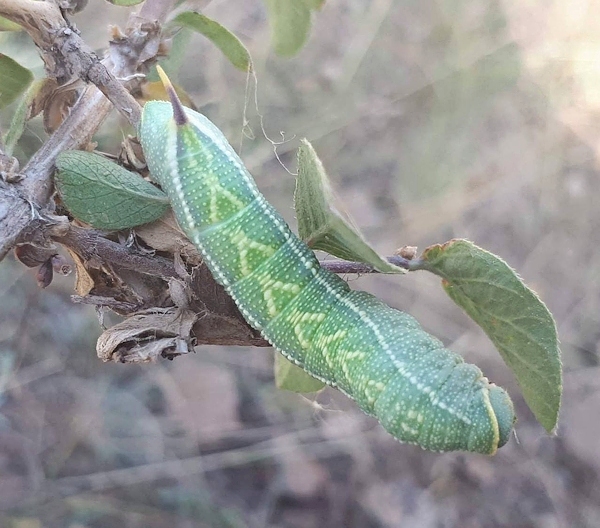
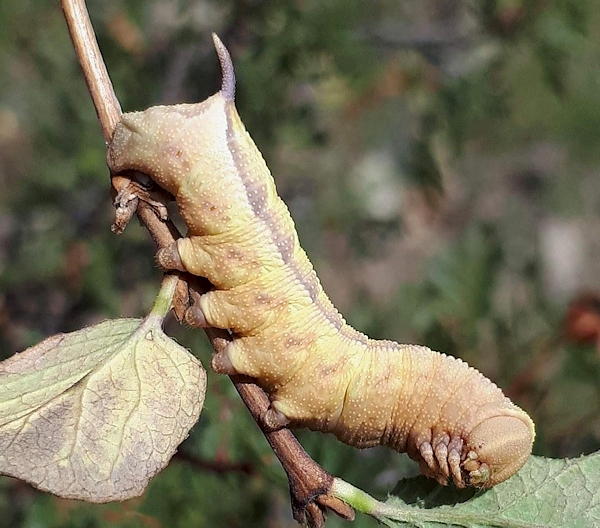
Found throughout July, August and September.
Hostplants. Most species of Lonicera, such as Lonicera korolkowii, Lonicera nummulariifolia, Lonicera seravschanica and Lonicera stenantha (Danner, Eitschberger & Surholt, 1998). However, the main host of Hemaris ducalis in the Chatkal Mountains, Kyrgyzstan, appears to be Zabelia corymbosa (Regel & Schmalh.) Makino [syn. Abelia corymbosa; Linnaea corymbosa] (Serge Yevdoshenko, pers. comm. 2019) and Lonicera bracteolaris (Toropov, Milko, Zhdanko & Evdoshenko, 2023).
In captivity, larvae will accept many species of Lonicera, including Lonicera tatarica. Rearing is not difficult and almost the same as for Hemaris fuciformis, even in plastic boxes on cut Lonicera. They tolerate both dry and wet conditions, but not overcrowding (Serge Yevdoshenko, pers. comm. 2015).
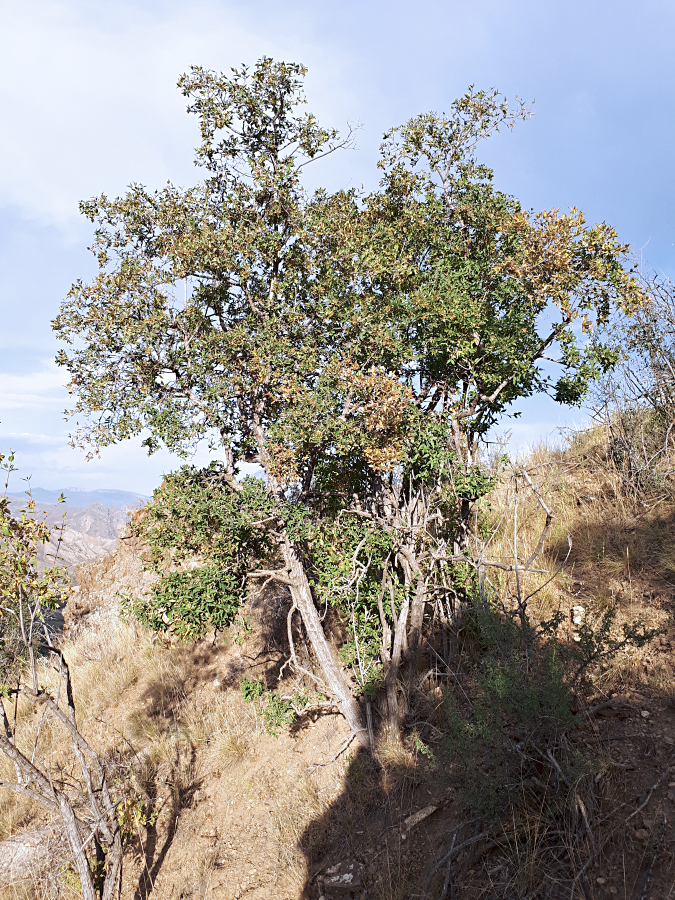
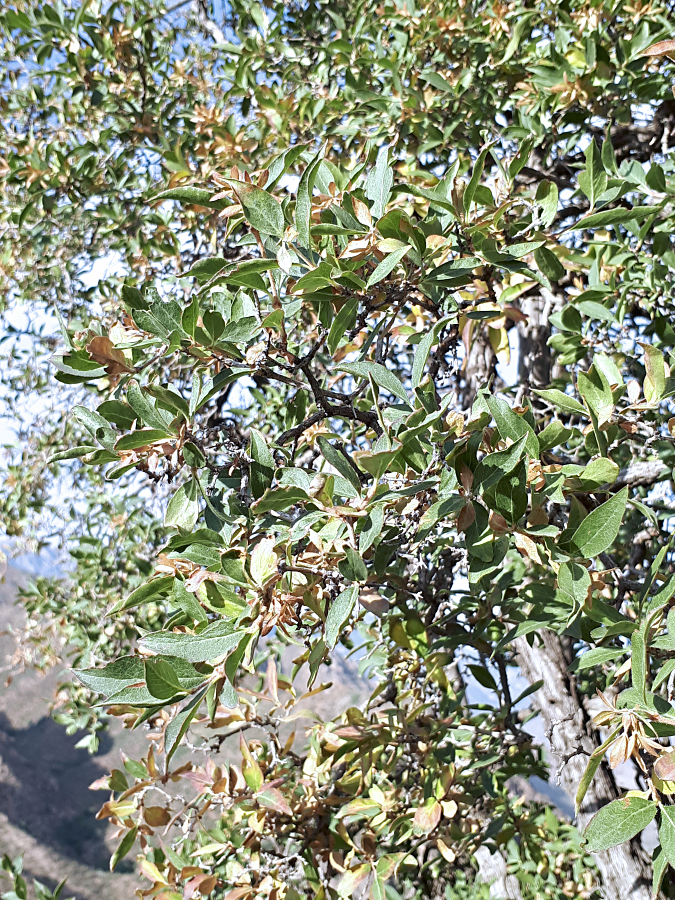
PUPA: 37mm. Blackish brown, rugose, very similar to that of Hemaris fuciformis. The overwintering stage.
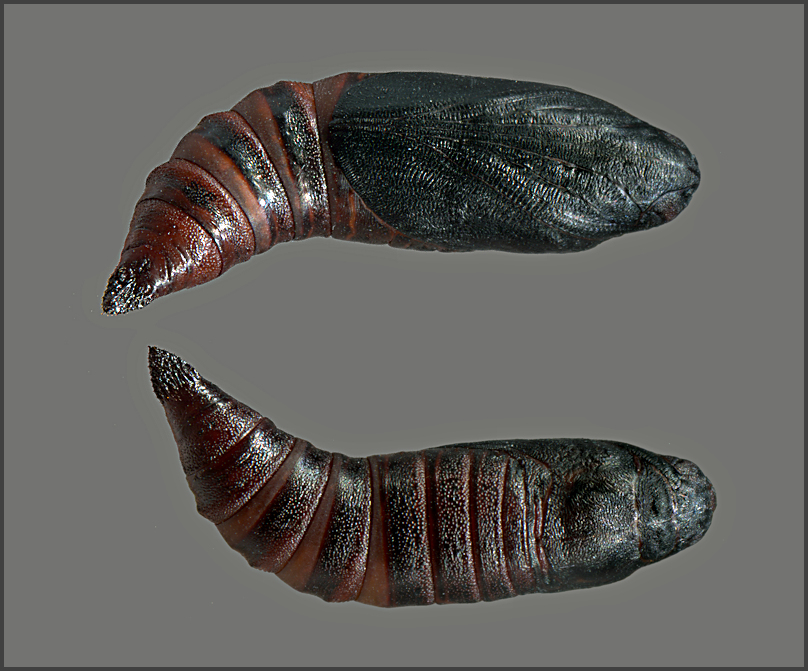
None recorded.
The Zarafshan valley/Urgut District and Gissar Mountains of southeastern Uzbekistan (Dubatolov, [1999]; Omonov, Rahimov, Askarova & Khomidova, 2023), southern and eastern Kazakhstan (Toropov, Milko, Zhdanko & Evdoshenko, 2023) up to the Altai Mountains (Yakovlev & Doroshkin, 2005; Shovkoon, 2015), Tajikistan (Grum-Grshimailo, 1890; Eitschberger & Lukhtanov, 1996), Kyrgyzstan (North Kirgizsky Mountains; Tian Shan (20 km E Kerben/Karavan, Kuyuk-Sai River; Chatkal Mountains (Toropov, Milko, Zhdanko & Evdoshenko, 2023))), the Bulgan-gol basin of western Mongolia (Yakovlev & Doroshkin, 2005), the Chinese portion of the Tian Shan, the mountains of south-western Xinjiang Province, China (several specimens in NHMUK), the Pamirs, northern and central Afghanistan (Ebert, 1969) and northern Pakistan to northern India (Jammu & Kashmir/Ladakh (Smetacek & Kitching, 2012)). Also, the Sulaiman Mountains near Quetta, Gilgit and Ziarat, Pakistan (Danner et al., 1998; Rafi et al., 2014; Salman Baloch, iNaturalist 2024), as an isolated population at 2400-4000m and, maybe, as a separate subspecies (Danner, Eitschberger & Surholt, 1998).
Can be abundant at certain sites in the Chatkal Mountains of Kyrgyzstan (Serge Yevdoshenko, pers. comm. 2015).
Extra-limital range. None.
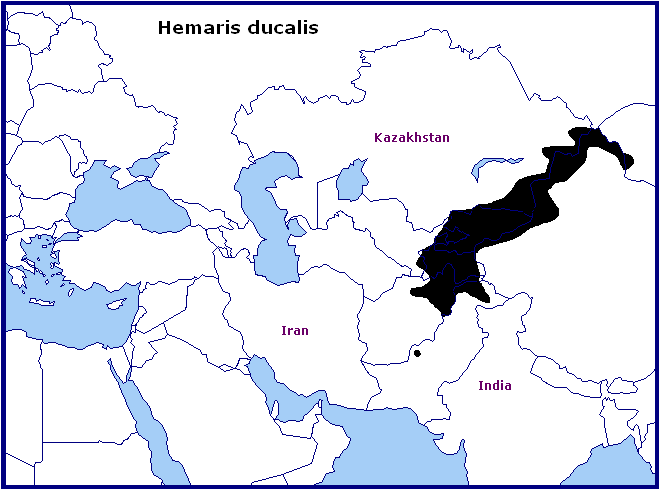
 Return to species list
Return to species list